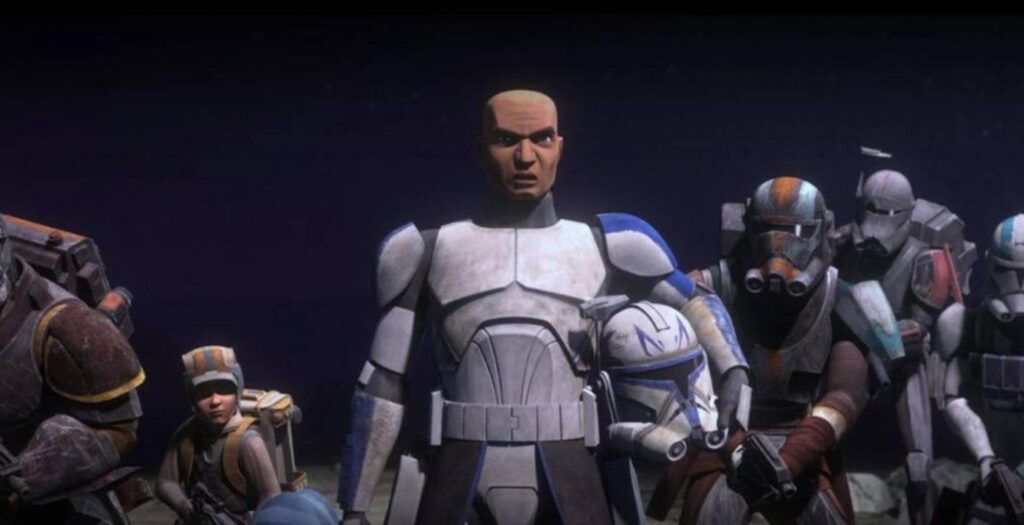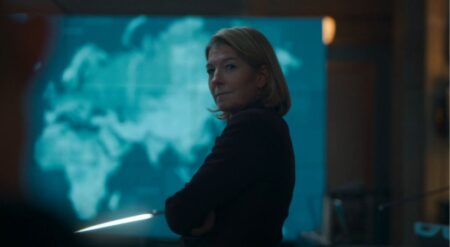The Star Wars franchise has always thrived on its ability to craft cohesive trilogies. For better or worse, this format for the films has solidified the franchise’s place as one of the most iconic in media history. It might seem unlikely that a group of clones could become a part of that storied history, let alone in animation. However, Jennifer Corbett, Brad Rau, Matt Michnovetz, and Kiner Music achieved just that with their work on The Bad Batch Season 3. Alongside the exceptional voice cast led by Dee Bradley Baker as the Bad Batch and Michelle Ang as Omega, this team delivered a final season that cements The Bad Batch as one of the finest pieces of Star Wars media.
As a whole, The Bad Batch tackles the question of the clones’ fate post-Clone Wars. The Bad Batch Season 3 begins to fulfill that premise by granting the clones autonomy, allowing them to break free from their roles as mere tools for the Empire. Fans witness the Empire treating clones as disposable property, contrasted with figures like Senator Chuchi who advocate for their rights. Additionally, viewers witness the Emperor’s intricate maneuvers, operating covertly as he pursues immortality through Project Necromancer, a project where Omega’s M-count proves pivotal.
The Bad Batch Season 3 begins on a somber note, following the events of season two where Omega and Crosshair are captured, and Hunter and Wrecker struggle to locate them. Faced with the Empire’s overwhelming power and their own dire circumstances, Clone Force 99 appears powerless to thwart the Empire’s plans for Project Necromancer. However, Star Wars is a tale of hope in the face of seemingly insurmountable odds and evil. This season demonstrates that, similar to Andor, not all heroes in the Star Wars universe need to focus solely on the conflict between Sith and Jedi to combat evil.
Despite the option of leading a peaceful life on Pabu, the Bad Batch, particularly influenced by Omega, remains committed to the fight. Omega, despite her limited exposure beyond Kamino at the start of the series, is determined to preserve the beauty she has witnessed. She embodies hope and resilience, recognizing her own potential to shape her destiny amidst the vastness of the galaxy. Refusing to let the Empire inflict further suffering on her loved ones, Omega resolves to do whatever it takes to spare others from similar pain.

In the final season, Omega becomes a beacon for the concept that everyone deserves a second chance and redemption is always possible, a theme deeply rooted in the Skywalker saga. Despite Crosshair’s actions in previous seasons, Omega refuses to give up on her brother. She sees beyond his past deeds and works tirelessly to reintegrate him into the group, playing a crucial role in helping Crosshair overcome his struggles following his time at Mount Tantiss. Further, this theme of redemption extends to other characters in the season, such as Asajj Ventress and Nala Se, representing a diverse range of individuals who, upon realizing they were mere tools of the Empire, break free from its grasp.
Despite the absence of Tech in The Bad Batch Season 3, his impact is strongly felt throughout. The 99 often find themselves in situations where his expertise would have been invaluable. Not only for his analytical skills and piloting abilities but also for his unique way of connecting with the group. His presence is honored with clear moments acknowledging his death, such as his goggles never being far from the Bad Batch crew.
The writing team pays tribute to Tech’s heroics, solidifying his legacy within the 99 and emphasizing that his memory lives on. While some fans may have hoped for a revelation involving CX-2 as Tech, such a plotline would have mirrored narratives already explored with Crosshair. Instead, Tech’s memory is preserved as a testament to his individual character traits, which eventually influence Omega’s own development.
While the final season of The Bad Batch meticulously explores the paths to freedom for various clones, it does overlook the Clone Commandos. While even unnamed clones are given screen time to rebel against the Empire and aid Clone Force 99, the commandos are portrayed as either complicit or still under the influence of their inhibitor chips. It’s puzzling why revered and accomplished clones like Scorch would passively accept the events unfolding on Tantiss among their brothers. Even if there isn’t a resolution for clones like Commander Cody, his defection is noted, which is more than can be said for the clone commandos.
The lack of agency for the commandos is particularly glaring given that the CX clones demonstrate the ability to perform tasks equivalent to an entire squad of commandos. This raises questions about why the Empire relies on them at all given that they have phased out clones across the galaxy in favor of an enlisted military. More importantly, it calls into question why the Bad Batch wouldn’t seek to rescue their likely mind-controlled brethren. While this omission may offer storytelling opportunities in other mediums, it leaves the Clone Commandos overlooked in an otherwise perfect season.

Despite reservations about the handling of the clone commandos, the writers and the talented team at LucasArts can be trusted to continue the clone’s story. The final season and the series as a whole convey a clear message about entrusting the next generation to carry on the torch. While Dave Filoni receives the first name credit, this project is very much the product of Jennifer Corbett, Brad Rau, Carrie Beck, and Kevin Kiner. The series demonstrates that the future of Star Wars storytelling is in capable hands, just as it was under Filoni’s guidance after Lucas.
The animation in The Bad Batch Season 3 is absolutely breathtaking, rivaling the epic shots typically reserved for the big screen. The cinematography seamlessly brings to life wide opening shots that immerse viewers in the vastness of the Star Wars galaxy. Transition scenes are so captivating that I found myself rewinding just to soak in the sheer beauty of each location and the incredible attention to detail.
Coupled with the captivating score by Kiner Music, each moment feels weighty and significant. As the season progresses, seamlessly moving from one stunning location to the next, the combination of stunning visuals and evocative music creates an immersive experience that truly captures the essence of Star Wars. Most importantly, the cinematography and music as much as the story presents a galaxy worth saving.
From the beginning of the season, Omega proves herself as capable as any member of the Bad Batch despite her lesser experience. She embodies the best qualities of her brothers, and by the season’s end, she has become a composite of each of them, ready to continue their fight. Clone Force 99 is willing to pass the torch to the next generation when their time is finished, highlighting the importance of nurturing and empowering youth. It is a powerful message that gives The Bad Batch Season 3 something worth saying. Even in our world, we can see that the very similar evils to the Empire are alive and well. However, like Omega, we see the next generation taking up the mantle of fighting against the world’s injustices.
Clone Force 99’s heroic actions in The Bad Batch Season 3 are pivotal in saving the galaxy and establishing their story as an essential component of the Star Wars canon. Throughout the season, the creative team takes viewers through a roller coaster of emotion with its unique group of misfits determined to stop the Empire and free the Clones. With its message to trust and empower the next generation in the face of injustice, The Bad Batch solidifies itself as one of the finest stories in the Star Wars franchise. You will laugh, you will cry, you will cheer, but ultimately you will fall in love with Clone Force 99.
The Bad Batch Season 3 is streaming now exclusively on Disney+.
The Bad Batch Season 3
-
Rating - 9.5/109.5/10
TL;DR
Clone Force 99’s heroic actions in The Bad Batch Season 3 are pivotal in saving the galaxy and establishing their story as an essential component of the Star Wars canon.








